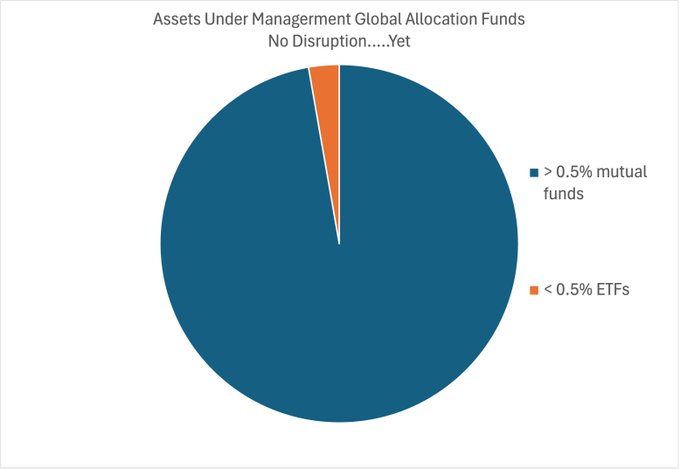Last week, I promised to tell you my “origin story”…
How it put me on the path to becoming a successful investor … and developing the stock-rating system I’m eager to tell you about today.
I cut my teeth trading foreign currencies for two eccentric millionaires who — besides being millionaires — could not have been more different.
One was formerly JPMorgan’s top currency trader, a neurotic New Yorker who rarely slept. We’ll call him “Nate” … “Nate the New Yorker.”
The other was a former grain trader from Chicago. Let’s call him “Chad” … “Chad from Chicago.”
As I said, Nate slept very little. He prided himself in reading every single piece of news that flowed across his Bloomberg terminal.
He was what I call a “feel” trader. He immersed himself in the news flow … got a feel for which direction the stories pushed the prices of certain currencies … and simply traded based on his gut.
It was a spectacle to watch him trade. He made money overall … but the swings were wild. And it was utterly impossible for him to teach anyone what he was doing.
Then there was Chad…
I kid you not, Chad spent most of the trading day in a hammock reading books.
He rarely knew what the day’s news was, but he was quick to pop from his hammock to make trades on a nearby laptop, whenever it gave a screeching “Ahhh-OOOOO-Ga” monkey-call sound.
See, Chad was what’s called a systematic trader. He created a strategy that clearly defined:
- What he would buy.
- Under what conditions he would buy it.
- And when to sell…
I quickly gravitated to Chad. Not only could I see he was more cool, calm and collected in his daily life … Chad was able to teach me how to make money in the markets.
He was able to explain why his approach works. And that made me feel like I had a fighting chance at replicating his success.
Because frankly, unless you’re lucky and have some “sixth sense” about the markets the way Nate seemed to … you need a system if you want to consistently make money.
That’s why I developed my stock-rating system for the Money & Markets community.
Today I’ll show you how you can start using it today for free, and share its forecast for a powerful, imminent bull market in a previously hated sector…
Introducing My Stock Power Ratings System
My experience with Nate and Chad taught me that news flow is not the true driver of lasting, market-beating stock returns.
The six factors I included in my Stock Power Ratings system are the true drivers…
These factors include:
- Momentum: Stocks that are trending higher at a faster rate than their peers tend to outperform stocks that are moving higher at a slower rate … or are trending downward.
- Size: The stocks of smaller companies tend to outperform the stocks of larger companies.
- Volatility: Less-volatile stocks tend to outperform high-volatility stocks.
- Value: Stocks that can be bought at low valuations tend to outperform stocks that trade for high valuations.
- Quality: The stocks of companies that exhibit certain “quality” characteristics — such as healthy balance sheets and persistently strong profit margins — tend to outperform the stocks of lesser-quality companies.
- Growth: The stocks of companies that are growing revenues, earnings and cash flow at higher rates tend to outperform the stocks of slower growing companies.
All told, my Stock Power Ratings system considers 75 individual metrics, each of which falls into one of these six factors. Both academic research and real-world results prove these factors work.
This rating system gives me, my team and our community of investors an immensely powerful tool chest… And it’s free for anyone who wants to use it.
If you’re curious whether a stock is “cheap” or “expensive,” you can quickly check my system and see the stock’s value rating.
If you want to judge how fast a company is growing, you can easily check its growth rating.
Just go to the Money & Markets website, type in at ticker on the upper right, and click the listing to see what the Stock Power Ratings system says about it.
Here’s what that looks like…
(Click here to view larger image.)
My Stock Power Ratings system rates a stock between zero (poor) and 100 (favorable), for each of the six return-driving factors.
Each stock also receives an overall rating. As you can see above, Exxon Mobil (NYSE: XOM) earns an overall rating of 94 out of 100. (Much more to say about that below.)
Its lowest factor rating is on size. It earns a low 1 out of 100, merely because Exxon is a massive company with a more than $400 billion market cap.
That means we can’t expect Exxon to beat the market thanks to the “size” premium that tends to favor smaller companies. But otherwise, Exxon rates very high on the other five return-driving factors:
- 94 on momentum.
- 86 on volatility.
- 92 on value.
- 96 on quality.
- 75 on growth.
Now, at this point you might be thinking…
How is it that Exxon can be a “momentum” stock…
And a “value” stock…
And a “growth” stock?!
Well, I’m glad you asked!
“How Can Exxon Be All These Things?!”
One of the biggest misconceptions about investing is that a stock can only be one thing.
Either a “value” stock or a “growth” stock … a “momentum” stock or a “low-volatility” stock.
Nothing could be further from the truth! In reality, the best stocks are the ones that meet multiple criteria.
There are certainly stocks out there with high ratings on one of the six return-driving factors my system considers. But that doesn’t make it a great stock.
For instance, a stock might trade at a low price-to-earnings ratio, making it seem like a good “value” stock…
But it can still be large, volatile, not growing revenues and trending downward.
A stock like that may earn a high value rating on my system, but its overall rating would be quite low.
Those are not the stocks my team and I look for!
Instead, we leverage my Stock Power Ratings system to find “well-rounded” stocks that rate well on four, five or all six factors. They earn the highest overall ratings.
Any stock that rates 80 or above overall earns our “Strong Bullish” label.
That’s an important distinction. My research shows that stocks that rate 80 or higher on my system have historically gone on to beat the overall market’s return by 3X!
These are the stocks that are “firing on all cylinders,” so to speak.
The company’s balance sheets and profitability are strong…
Revenues and cash flows are growing faster than average…
Their share prices aren’t volatile and are trending higher — at a faster rate — than their peers…
And, on top of all that, they trade for either “fair” or “cheap” valuations. Right now, Exxon Mobil ticks all these boxes.
Listen, when you find a stock that beats the market on each of the return-driving factors … that’s the stock you want to get into!
Even better, when you see a group of stocks from the same sector or industry all receive strong ratings on my Stock Power Ratings system, it can send a clear signal that the entire sector is ripe for market-beating returns.
More than nearly any other industry, this is what I see happening in oil and gas right now…
Ratings Reveal MAJOR Oil and Gas Opportunity
See, it’s not just Exxon Mobil that rates “Strong Bullish” on my system.
I asked my research analyst, Matt Clark, to run what we call an “X-ray” on the individual stocks in the SPDR S&P Oil & Gas Exploration ETF (NYSE: XOP).
The oil and gas industry was left for dead heading into 2020, thanks to a major bear market in oil that began in 2014.
Few people were talking about that bear market because, well, the rest of the stock market was chugging higher. And cheaper gas prices made the economy run smoother overall.
It wasn’t such a good move to be in oil and gas stocks between 2014 and 2020. Growth and profitability declined … and stock prices trended lower by the day.
But now … you’d be a fool to not get into oil and gas stocks!
I think we’re in the very early innings of what I expect will be a massive, multiyear bull market in oil.
It’s a big-picture story which I’ll share with you very soon…
But until then, just know that all the factors that led to a major bear market in oil between 2014 and 2020 are now running in reverse.
It’s about to unleash a massive bull market in oil … and the best-positioned oil and gas stocks will reap the greatest rewards.
You can see the early signs of the industry’s newfound strength in the “X-ray” I had Matt run on the oil and gas ETF, XOP.
Remember when I said Exxon Mobile earns a “Strong Bullish” rating of 94 out of 100?
Turns out that 40 of the fund’s 59 total stock holdings also earn my Stock Power Ratings system’s coveted “Strong Bullish” rating. A further 13 of them earn our “Bullish” rating, with overall scores between 60 and 80.
This all suggests the oil and gas sector is primed for a massive new rally. The highest-rated oil and gas stocks could easily beat the market by 3X or more!
My team and I are leveraging my Stock Power Ratings system to find the best of the best oil plays. I expect my No. 1 stock for this trend to soar 100% higher in just 100 days.
I’ll reveal all the details later this month. So, click here to stay up to date with the massive oil bull market that I’m tracking.
Until next time!
To good profits,
 Adam O’DellEditor, Money & Markets
Adam O’DellEditor, Money & Markets
P.S. Before you go, I’ll ask you to take two minutes and do me a quick favor…
Think about a stock … any stock. Maybe it’s one you already own a lot of. Maybe it’s one you’re thinking about buying. Maybe it’s even one you got as a tip from a newsletter like this one.
I want you to take that ticker, head over to the Money & Markets website, and plug it in.
What does the Stock Power Ratings system say about it? Do you feel differently about the stock than you did before?
Email me at [email protected] with what you found … and I’ll look to share what your fellow readers discovered in my next dispatch.
|
|
|






































